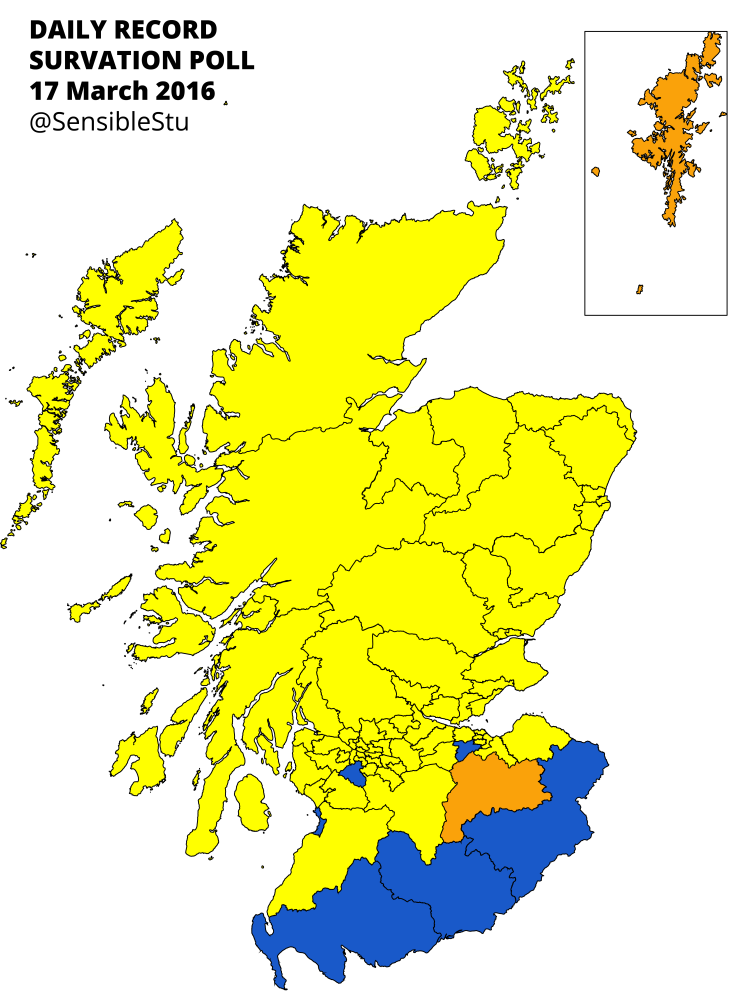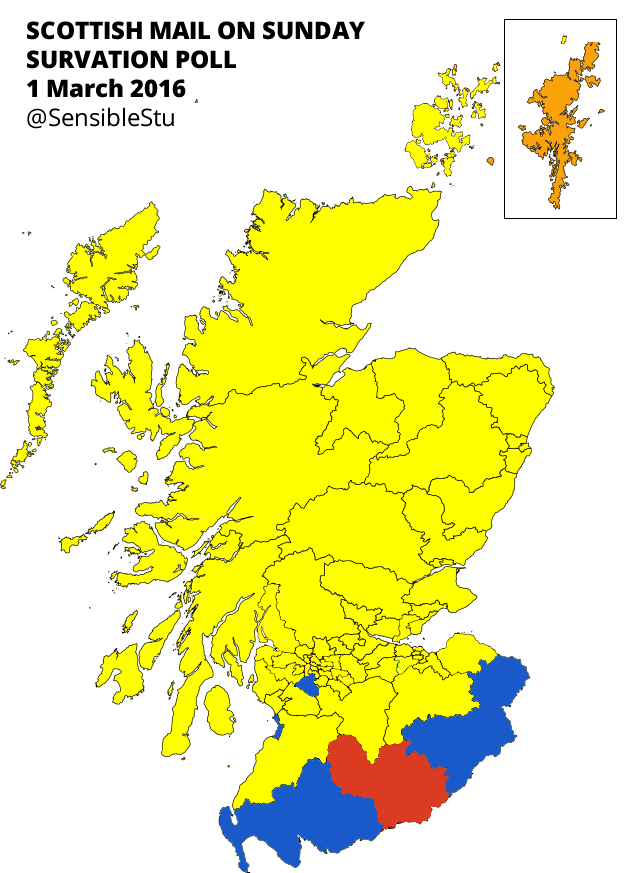Projection: SNP majority of 9, Tories second on seats
 SNP: 69 (-)
SNP: 69 (-)
Conservative: 24 (+9)
Labour: 19 (-18)
Lib Dem: 6 (+1)
Green: 7 (+5)
UKIP: 4 (+4)
Apologies for the delay in crunching the numbers on this – I was busy being awarded my PhD.
Last week’s Survation poll makes for depressing reading for Scottish Labour. Despite leading the Tories in both constituency and regional headline numbers, Labour is forecast to finish behind the Conservatives in seats.
On Survation’s figures, the SNP look set to win 65 out of 73 constituency seats. Labour is completely wiped out in the constituencies, while the Tories gain Dumfriesshire and Eastwood from Labour, and Edinburgh Pentlands from the SNP. While the Lib Dems lose Liam MacArthur in Orkney – perhaps surprisingly, they gain Midlothian South, Tweeddale, and Lauderdale from the SNP.
The Highlands and Islands produces the most astonishing result, with the Conservatives going from two to four seats, with UKIP picking up two regional seats. The Conservatives also poll strongly in the South of Scotland and West of Scotland, and gain an extra seat in North East Scotland and Central Scotland.
The Greens gain a seat in Lothians, West of Scotland, and North East Scotland; and two in Mis Scotland and Fife. UKIP are the other big gainers, winning four seats.
High profile casualties include Labour’s Ken Macintosh and Sarah Boyack, and the SNP’s Christine Grahame and Paul Wheelhouse.
The most marginal constituencies are primarily located in Edinburgh, with Central, Southern, Pentlands, and Edinburgh North and Leith all looking competitive. Midlothian South, Tweedale and Lauderdale, Eastwood, and Orkney are all close contests too.
While the regional subsets in the polling are too small to be individually significant, some consistent patterns are beginning to emerge. Polls consistently show UKIP gaining seats, with the Highlands and Islands looking particularly promising. Glasgow also looks like a potential source of a UKIP seat. While polls also consistently show increase in support for the Greens, pinning that support down to particular regions is proving a little more tricky.
Tory strength is heavily concentrated in the South of Scotland in most polls, with modest growth in the Lothians and West of Scotland; while generally showing more slight gains across the board. Labour’s collapse is no surprise, though they appear to be competitive in Edinburgh, with frequent flashes of support in South of Scotland. Nonetheless, the regions most likely to produce more than three Labour MSPs remain Glasgow, Central, and West.
Furthermore, as discussed here previously, the SNP appears unlikely to make significant gains on their 2011 majority. Nonetheless, given that SNP representatives aren’t exactly known for their dissentiousness, when it comes to majorities size really doesn’t matter.
In the fullness of time I hope to collate a “poll of polls” in the hope of putting together more reasonable sample sizes in the individual regions.

